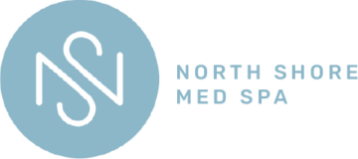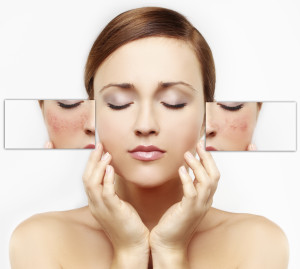Rosacea affects an estimated 16 million Americans. This skin condition is often mistaken for acne, and it can affect anyone of any age.
What Is Rosacea?
Rosacea is a chronic skin condition that causes redness and flushing on the face. It can lead to the appearance of visible blood vessels on the face and may sometimes produce small bumps filled with pus.
Other symptoms include:
- Tenderness
- Burning or hot sensation
- Rash
- Dry and irritated eyes and eyelids
- Swollen eyes and eyelids
- Thickened skin on the nose
Symptoms can flare for up to several weeks or months, then go away for long periods of time before it comes back. Common triggers that lead to flares include alcohol, exercise, spicy foods, and medications that dilate the blood vessels.
This skin condition can affect anyone, though certain factors can increase the risk for rosacea. Risk factors include:
- Being female
- Being over the age of 30
- Smoking
- Family history of rosacea
- Having skin that blushes or burns easily
- Having pale skin
How to Diagnose Rosacea
There is no specific diagnostic test for rosacea. Doctors typically rely on a physical examination to look for signs to diagnose this skin condition. In some instances, tests may be performed to rule out other conditions like lupus or psoriasis that produce similar symptoms.
Treatment Options for Rosacea
The most common treatments for rosacea include topical agents, oral antibiotics, and laser therapy. The goal of treatment is to reduce and control its symptoms.
Topical Agents
Mild rosacea can often be effectively treated using creams, gels, and ointments that narrow the blood vessels and reduce redness and flushing. Topical agents can also be used to treat rashes and pimples, or bumps, caused by this condition. Many topical agents contain antibiotics, antiparasitics, or vasoconstrictor medications.
Oral Antibiotics
Oral antibiotics are typically only used to treat moderate to severe cases of rosacea. These medications are often effective at reducing inflammation, as well as bumps and pimples.
Laser Therapy
Laser and light therapies can help shrink noticeable blood vessels. These therapies may also reduce the size of the nose in people whose skin has thickened.
Laser therapy for rosacea works by using energy to penetrate the epidermis, target capillaries, and reduce the discoloration caused by small blood vessels and broken capillaries in the skin. Laser therapy is a non-invasive treatment option, and it can also restore and improve skin tone and color.
What to Expect at Your Rosacea Appointment
Rosacea is usually treated by a dermatologist or a doctor at a medical spa who specializes in skin rejuvenation treatments.
A doctor will perform a physical examination and discuss symptoms, including how long symptoms and flares have been occurring. Then, the doctor will discuss available treatment options and recommend the best treatment based on the severity.
The doctor may also discuss potential side effects of treatment, such as temporary irritation or redness caused by topical agents, or an upset stomach caused by oral antibiotics. Side effects of laser therapy usually only include temporary pinkness of the skin.
North Shore Med Spa offers a wide range of laser treatments that can improve the appearance of the skin, including that affected by rosacea. Call us today at 516-441-5110 to request a consultation.

